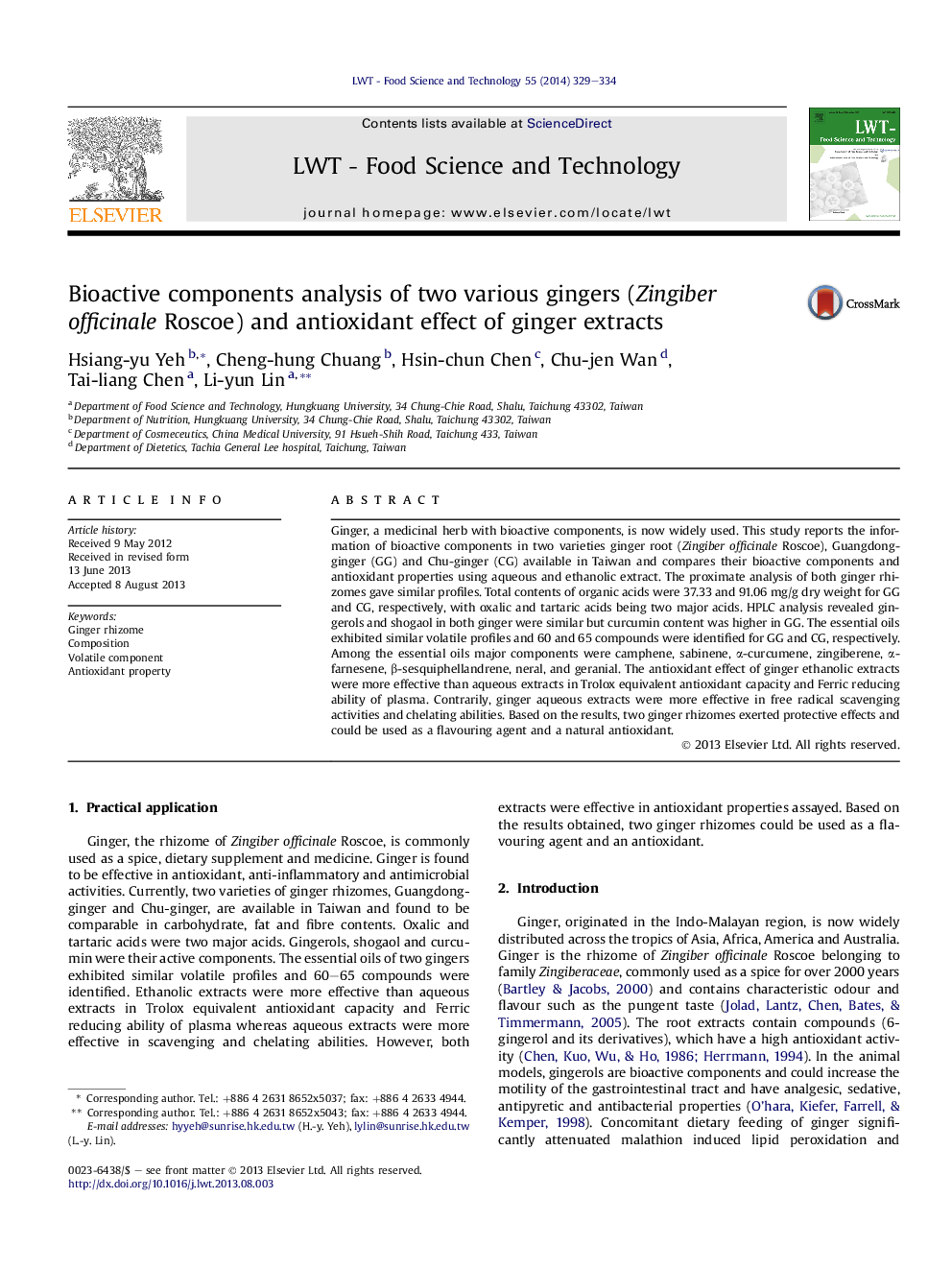| کد مقاله | کد نشریه | سال انتشار | مقاله انگلیسی | نسخه تمام متن |
|---|---|---|---|---|
| 6403960 | 1330898 | 2014 | 6 صفحه PDF | دانلود رایگان |

- Oxalic and tartaric acids are two major acids in ginger rhizomes.
- Gingerols, shogaol and curcumin are bioactive components in ginger rhizomes.
- Ginger rhizomes can be used as a flavouring agent in food and also an antioxidant.
Ginger, a medicinal herb with bioactive components, is now widely used. This study reports the information of bioactive components in two varieties ginger root (Zingiber officinale Roscoe), Guangdong-ginger (GG) and Chu-ginger (CG) available in Taiwan and compares their bioactive components and antioxidant properties using aqueous and ethanolic extract. The proximate analysis of both ginger rhizomes gave similar profiles. Total contents of organic acids were 37.33 and 91.06 mg/g dry weight for GG and CG, respectively, with oxalic and tartaric acids being two major acids. HPLC analysis revealed gingerols and shogaol in both ginger were similar but curcumin content was higher in GG. The essential oils exhibited similar volatile profiles and 60 and 65 compounds were identified for GG and CG, respectively. Among the essential oils major components were camphene, sabinene, α-curcumene, zingiberene, α-farnesene, β-sesquiphellandrene, neral, and geranial. The antioxidant effect of ginger ethanolic extracts were more effective than aqueous extracts in Trolox equivalent antioxidant capacity and Ferric reducing ability of plasma. Contrarily, ginger aqueous extracts were more effective in free radical scavenging activities and chelating abilities. Based on the results, two ginger rhizomes exerted protective effects and could be used as a flavouring agent and a natural antioxidant.
Journal: LWT - Food Science and Technology - Volume 55, Issue 1, January 2014, Pages 329-334